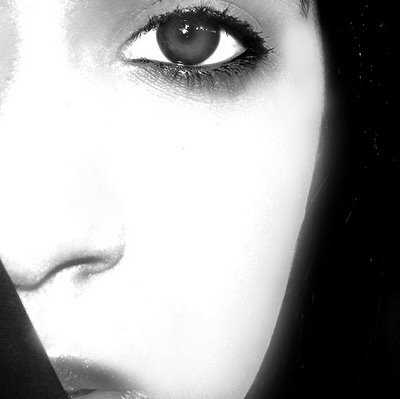What is an Orthodox Woman?
18 Μαρτίου 2010
a woman has never been an easy task, ever since God said to Eve, “In
pain you shall bring forth children” (Genesis 3:16). But up until this century, it was at least a fairly
straightforward one. Every little
girl grew up knowing exactly what was required of her in life, and learned, if
not to like it, at least to accept it.
In
the twentieth century, all this has changed.
Not that being a woman has gotten any easier, in spite of multitudes of
“labor-saving” household devices and the rather dubious advantages of
“having it all.” (What nobody
told my generation, the later baby-boomers, when we were embarking on our
careers and families was that “having it all” really only meant having twice
as much work!) But while hard work
is still with us, modern women have lost their clear direction for life.
We are confronted with a cacophony of voices and choices, each beckoning
us onto a different path that promises “fulfillment’”
The
world gives us many options, ranging from the ultra-conservative image of the
cowering, mouselike wife living in total subjection to her overbearing husband,
to the upwardly mobile business or professional woman who can’t be bothered
with annoying distractions such as children.
On the farthest fringe, we hear the radical feminists calling every woman
to become a (preferably Lesbian) manifestation of the earth-goddess.
Although
the world offers these and countless other choices, it fails to provide any
satisfactory means of determining which of these paths (if any) is really the
right one. Even the various
churches have not been able to present a united front or to give women any
clear, reliable direction as to how we ought to order our lives or what sort of
model we ought to follow.
Indeed,
most churches seem to be just as confused as individual women are as to how to
respond to rapidly changing social conditions and the demands of feminism.
So
where does all this leave us? Must
we choose between equally unacceptable
extremes, or is there another way? Is
there a way that offers peace amidst chaos; that speaks of balance and right
proportion; that offers eternal rather than temporal regards; that promises true
fulfillment, not of passing earthly desires and ambitions, but of the deepest
longings of our souls?
There
is indeed such a way, and it is to be found within the Orthodox Church.
The Orthodox model of womanhood is based upon the wisdom of the ages
rather than the shifting sands of philosophical fads.
The Orthodox way sees woman as God sees her – as a creature of honor
and dignity, with gifts and responsibilities uniquely her own, with her own
essential role to play in the salvation of mankind.
To
flesh out that vision and see it more clearly, we must look first at the
historical development of the place of women within the community of faith.
IN
THE BEGINNING
To
understand the history of women in the Church, we have to go back to the very
beginning: to Eve. Church Fathers and scholars have expressed a variety of
opinions about Eve, about the nature of her relationship with Adam before the
Fall, and about the true significance of the “curse” laid on her after the
Fall. But beyond all the controversy, several things are clear:
I)
Eve was created in the image of God, just as was Adam. “So God created
man in His own image; in the image of God He created him; male and female He
created them” (Genesis 1:27). In their essence as created beings, men and
women stand with equal worth and honor before God.
2)
Eve was created to be Adam’s “helper” (Genesis 2:18). This does not
mean she was to be his servant, still less his slave. The Hebrew word used here (ezer)
is often used of God Himself as the Helper of His people. Clearly, the relationship
intended is one of mutual cooperation, not of domination. Adam, on the other
hand, was given the task of naming the animals before Eve was made from his rib:
so the work of “subduing the earth” was primarily his.
3)
Eve, as we all know, made a dreadful mistake. She listened to the
seductive words of the serpent and, without consulting her husband, ate
the forbidden fruit, thus condemning herself and all her progeny to a life
outside Paradise. Some have speculated that Satan chose to tempt Eve rather than
Adam, not because she was weaker, but because he knew that Adam would follow her
in her sin (making him equally guilty). The righteousness of the world was
entrusted to Eve’s keeping, but she did not keep the trust.
4)
As a result of her sin, Eve was condemned to sorrow and pain in childbearing,
and to a life of subordination to her husband (Genesis 3: 16). The wording of
this curse (“you shall have sorrow… he shall rule”) suggests that God was
simply predicting what would happen to women living in a fallen world, rather
than deliberately laying a punishment upon them. Certainly the curse is an
accurate description of what happens to women when they are left at the mercy of
fallen men.
So
we have a picture of God’s intention for men and women—a relationship of
loving cooperation between two people equal in value and honor, but differing in
roles. And we have a picture of that relationship perverted by sin: women
bound by their own desire and their need for children to men who wrongfully dominate
and belittle them. But in that very hour when God pronounced the fate of fallen
woman, he also pronounced her hope: the Seed that would bruise Satan’s head.
to be continued…
Πηγή: http://www.antiochian.org/Orthodox_Church_Who_What_Where_Why/What_is_an_Orthodox_Woman.htm




